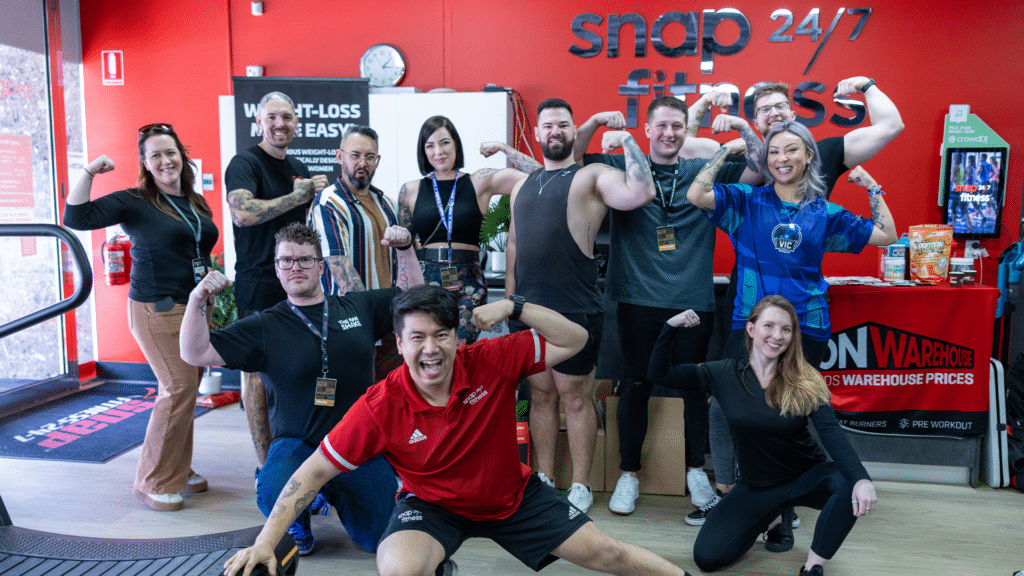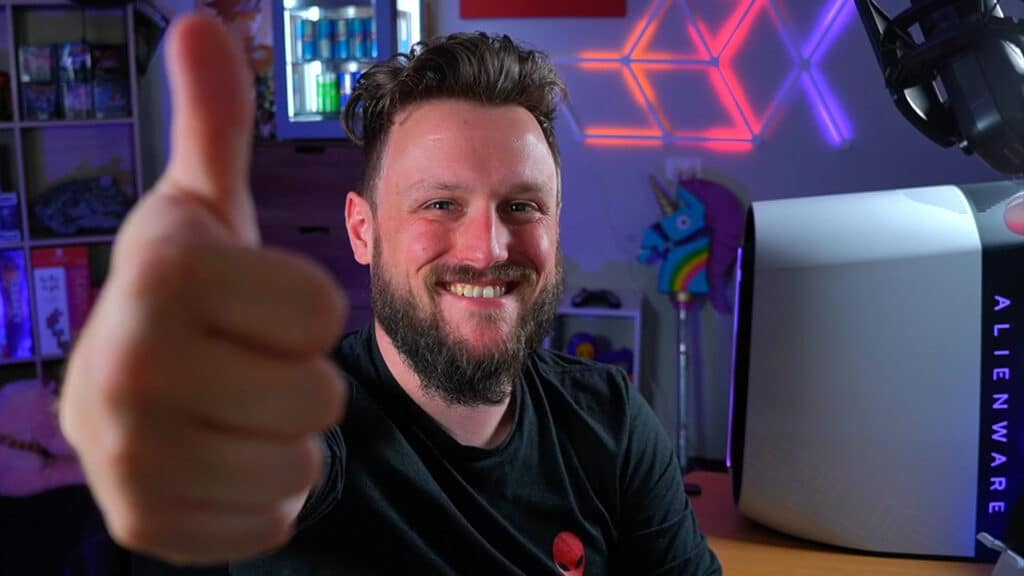Ed Boon, co-creator of the Mortal Kombat series and the brains behind the Injustice series recently noted in a Game Informer interview that Mortal Kombat X is the highest-earning title he’s ever been a part of.
Think about that for a second. Scorpion and Sub-Zero outsold Batman and Superman. We’re so far through the looking glass that a game featuring the who’s-who of DC’s heroes and villains couldn’t outsell a bunch of palette-swapped ninjas… and Johnny-freakin’-Cage. It’s a massive triumph for NetherRealm Studios and WB Games, who on the back of that massive success, have clearly thrown the chequebook at Boon to make a followup in Mortal Kombat 11.
And oh boy, they knocked it out of the park.
The first Mortal Kombat
It’s actually a wonder to think about the very first Mortal Kombat way back in 1992. Boon, his former partner John Tobias, the Pesina brothers and a handful of others in a small studio with a few props from a local costume store unknowingly crafting the first entry in what would become a franchise as deeply entrenched in video game history as some of the all-time greats.
It wasn’t a terribly good game to play, but the inclusion of blood and the mythical fatality meant that it sparked a wave of hysteria from detractors. And, of course, the absolute need to play it from people like myself–even over the undisputed king of the genre at the time, Street Fighter II.
More sequels
Its popularity peaked in the 90s at Mortal Kombat 3, and then from the 4th instalment onwards, the MK franchise went through a long and winding downturn with moderately successful games that just kinda… lost their way for the most part.
Gone were iconic original characters like Kitana, Kung Lao and Jax. Instead, we were treated to such stinkers as Drahmin, Jarek and Hsu Hao. They came across a decade of forgettable, pseudo-3D games that felt like the Homer of fighting games. They tried way too hard at too many things with way too many useless and unwelcome additions. Arguably, they peaked (or is that bottomed out?) with Mortal Kombat vs DC Universe. It was a necessary precursor to the Injustice franchise, perhaps. But, it was undoubtedly the next-to-last gasp of a dying franchise; it absolutely, unequivocally sucked.
Then came Mortal Kombat 9
The franchise reboot that came with Mortal Kombat 9, then, was perhaps NRS’s last chance. They decided to refocus their approach on 2D fighting with the original cast (as well as a handful of favourites from throughout its later years). This, combined with its cleverly rebooted storyline was enough to propel the MK franchise back into the hearts and minds of the gaming public. And, its commercial success showed that there was life left in Mortal Kombat yet.
Subsequent games have added a greater sense of ambition and refinement to what MK9 put down. Now, MK11 is unarguably the best game that NRS, or Acclaim before it have ever made. Ever.
With that said, the pressure from on high that NRS no doubt feels as a result of their games’ success is something that also hampers their games’ longevity. The 2-year cycle that each game since MK9 has existed on means that interest in the current title wanes once the next is announced. As a result, the community suffers.
Contrast this to a game like 2009’s Street Fighter IV, which enjoyed almost 8 years of competitive success before being unfairly yanked from centre stage. So while I can sit here and confidently say that MK11 is the best NRS game ever made, the real question is: is this the game that breaks the cycle?
Not everyone will care about that question, which is understandable. So, it’s important to look at this through three different lenses: as a single player experience, as a competitive title, and as a service.
The bar for single player content
The offerings for someone who simply wants to jump in are a treat: the usual suspects such as story mode, daily towers, arcade mode and The Krypt all make a return, along with an extremely exhaustive tutorial mode and most pleasingly, perhaps, a character customisation mode.
Not only does MK11 allow you not only to change up your character’s aesthetics à la Injustice 2, but it also lets you adjust their core abilities. This will be familiar to people who have played Mortal Kombat X. But, instead of three presets, you can pick and choose what you prefer. You can then use these custom variations yourself, or assign them a “personality” using sliders and send them off for AI battles which offer rewards along the way.
Not a fan of Johnny Cage’s straight MK1-style fireball? You can give him his old MK3-style arcing fireball. Or, maybe you’d rather turn Jax from an all-out grappler into a thumping bruiser? You can do that too. No one move from what I saw seemed overly powerful, so aside from the novelty, you’ll never run into any character with an ability that’s unfair.
The tutorial that comes bundled with the game really is staggeringly comprehensive, taking you through the most basic elements of the game, ultimately nudging you towards some of the concepts more axiomatic to the genre itself, such as whiff punishing and frame data. With the Shao Kahn announcer voice being gated behind all of these tutorials, it’s extremely likely that you’ll complete them, and get good in the process — so it’s a win-win, really.
Graphics improvements
Graphically, the game takes a massive step forward. Character models finally look on the money instead of the odd, “squinty” facial features of previous instalments. The animations are fluid, natural and extremely nice to look at. No more stanky legs, and no more McDojo martial arts. The animations still aren’t quite as fluid as the likes of Street Fighter V. But, it’s a pretty close race at this stage, so you’d be splitting hairs to tell the difference.
Characters are also mercifully simplified, shifting from the over-designed chaos that was MKX to a sleeker, more practical approach. No longer do characters look like they set off a bomb in an occult store — now, they look like they’re ready for a fight. And the improvement to the female models is remarkable, especially when compared to the MK9 models, with their absurd proportions and costumes made up of little more than a series of strategically placed ribbons and double sided tape hold on for dear life.
The story
And then, there’s the story. Oh boy, the story. So NRS games have pretty much lead the way in terms of story modes in fighting games. Other franchises followed suit: the best of that bunch was probably Tekken 7. Not only did it pale in comparison to the level of quality that NRS games have offered over the years, but other franchises were a massive, massive drop-off from there. In short, if you want a story mode that’s worth playing, play an NRS game, period.
MK11 is a direct follow up to MKX’s storyline, picking up right where we left off. The fallen elder god Shinnok has been defeated and subsequently decapitated by Raiden. He, who — tired of Earthrealm’s laziness — took a turn for the dark and tyrannical at the conclusion of MKX. Kronika, a new Big Bad to the series, sees this as the final straw in Raiden’s constant meddling with the delicate balance of the universe, so she sets a plan in motion to reset the timeline of the multiverse to make things right.
It’s absolutely bonkers, barely makes any sense, and there are plot holes big enough to fit a semi-trailer through. Also, I loved it.
Character play
Character chapters make a return with the option of selecting different characters in certain situations. One such chapter, for instance, lets you play as either Sub-Zero or Scorpion with the cutscenes adjusting accordingly — so newer players will get the chance to play as over half the cast by the end of proceedings, which is definitely welcome.
There are some genuinely surprising moments, brilliant character interactions (with my personal favourite being Johnny Cage with his younger, Hollywood self), and the standard paper-thin justifications to break out into fights. But much like the first Mortal Kombat movie, it’s best to go into this with your popcorn at the ready. It’s a wonderfully schlocky storyline that never takes itself too seriously, so neither should you. It would have a very happy home in the cinemas of the 1990s, even if it wouldn’t ever be in the running for any Oscars.
And hey, if a solid story mode is all you want from MK11, you’ll be left feeling as satisfied as ever, but thankfully, there’s so much more.
New characters
The new characters, for the most part, feel wholly welcome in the series. NRS hasn’t always nailed this one, with the aforementioned stinkers being prime candidates (and let’s not forget the likes of Mokap, Kobra and Meat). But, the time-bending grappler Geras, the elder god Cetrion, and the creature known only as The Kollector don’t feel out of place in any way. Plus, the reinvention of fighters such as Skarlet and Frost are extremely well done. All in all, MK11 is at no risk of Mokap-ing themselves.
Timed challenges
The time-gated challenges are now referred to as Towers of Time. Each features a series of fights with all sorts of silly addendums that make the fights varied and challenging. From characters with super armour to one hit kills, or assists from the sidelines by non-returning characters like Kung Jin or Takeda, these battles are frequently frustrating and others are seemingly impossible. However, with some of the game’s best rewards gated behind them, and with NRS vowing to revisit the balancing on both the rewards and the challenge posed, you’ll no doubt spend countless hours grinding them out.
The Krypt
As for The Krypt? Well, any other game that would gate its unlockable content behind such a convoluted mechanism as this would be rightly lambasted, but you know what? In MK11, The Krypt is such a wonderfully indulgent throwback that it is absolutely impossible to be unimpressed by it, even if you’re upset by how it works.
If you’ve been a MK player since the beginning, The Krypt will prove to be absolutely magical. I won’t spoil the fun, but suffice to say: it’s not called Shang Tsung’s Island for no reason. Inbetween character skin unlocks, gear unlocks, concept art, music and more are snippets of lore that flesh out the game world. They help you learn the (sometimes grisly) fate of characters that didn’t quite make the cut in this iteration. In short, if MK11 in its totality is a steady drip feed of nostalgia, The Krypt is a complete overload, albeit an expensive one.
The end result is a love letter to MK fans who will be constantly picking up on those little winks to the camera. But even without that awareness, for new fans, there’s a lot to love here. Try not to get too bogged down in the price tags on the chests and just… enjoy the ride.
Progression
So yep, the progression itself is extremely grindy, and you’ll need to prepare yourself for some serious sessions if you intend to enjoy the many, many unlocks the game has to offer. Your spoils are generally split between the Towers of Time and the Krypt, and with the assortment of items being seemingly randomly distributed, getting exactly what you want is going to be a draining experience. The completionists may want to get comfortable, but if you’re not about that life, this could be a deal breaker.
If you just want to get in there and play, then it’s worth noting that you’ll earn money regardless, so you may not even notice your burgeoning riches by the time you’re done with a solid session.
Kompetitive play
In terms of the gameplay, it’s mostly familiar in terms of combo structure and the basic controls. But, the two major changes are that X-Ray attacks and combo breaks are gone, and the run function is gone. Both make for interesting shifts in how the game plays.
NRS have split the one meter you’re likely used to for using EX moves, breaking combos or hitting super moves — instead splitting them into offensive and defensive meters. Now, you can break combos and use armoured wakeup moves without stifling your offensive potential, so matches can turn much quicker than before. However, the lack of a run function means that the action is substantially less scramble-heavy, and a lot more deliberate.
For someone who appreciates the mid-range neutral game more than relentless mixups and combos, this is an extremely welcome change, but it may not be for everyone. Competitively it’s difficult to know how this game will shake out but my initial impression is that MK11 will feel a lot more cerebral and much easier to follow, if not quite as frenetically paced — and for the esports crowd, that’ll be a big winner.
Tournament variations
Somewhat bafflingly, each character has a pair of “tournament” variations which are tied to a dedicated tournament game mode. In this mode, characters are given a random loadout of cosmetic gear and the variations shrink from whatever you have saved to the sanctioned two.
However, the great upset comes from the fact that these variations are not applied by default, so if you want to jump into training mode with these variations to learn how to make the most of them, you’ll need to set them manually. This may be fixed in a future patch (and I assume it likely will since the unpatched game doesn’t even have these variations in place). But, at the time of writing this is a massive, if temporary pain that really shouldn’t have made it out of testing.
What’s more, it seems as if, unlike MKX’s thoughtful variation system, MK11’s tournament variations were likely slapped together in an afternoon — one of the two variations are invariably leagues better than the other, so really, there isn’t much choice to be had here. I wouldn’t be surprised if these are expanded, or revised entirely as the game matures.
Training mode
Additionally, training mode is still frustrating, with the feature set just not quite being as complete as it could be. On the plus side, frame data for moves is available on the fly, so you’ll get to see how your attacks shake out in real gameplay situations rather than simply on paper
But, on the other hand, input recording is overly complicated, dummy options are suboptimal, and overall, Street Fighter still just does it better. Obviously, the best training is with a friend, but for people who are interested in solo lab work, you may find yourself more annoyed than you probably need to be.
Online, ecosystem & more
Lastly, in terms of MK11 as a service, the big omission is the Faction War from MKX, which gave some overarching purpose to every fight and every interaction in-game. Instead, the focus seems to have shifted to timed mini-seasons, where players are rewarded for completing Towers of Time and winning matches. In fact, pretty much everything is tracked and ranked, which some may find a little confronting, but with rewards for placing in any of the game’s many modes, at least there’s an incentive, albeit one you don’t have much assistance in achieving.
While Faction War wasn’t exactly the most compelling reason to come back to MKX, it was a nice inclusion, and a lack of a replacement does mean that people that aren’t interested in the competitive side of MK may find themselves without a reason to play in the long term, assuming gear unlocks just aren’t all that important to them.
This doesn’t close the door on something like it making a return in MK11. But, at present, the game feels a little more disconnected from its broader ecosystem in a way that MKX simply wasn’t.
Online
As for the online? All of the modes you’re accustomed to, make a return in this iteration. And, while nothing reinvents the wheel here, I’m happy to report that the netcode and matchmaking services are extremely solid. Mercifully, the game notes when your opponent is either on a wi-fi or wired connection, so you’ll be able to pick and choose your battles a little more reliably.
Future kontent
If you’re a keen enough sleuth, you’ll have already seen the characters that will likely make up the first DLC pack for MK11.
There are some wonderful surprises there — and the news that there will likely be three packs in total will bring the roster to a seriously impressive number. But is that enough to keep people playing MK11 into the future? It’s difficult to say: additional content is obviously welcome, but aside from the tower content which is bound to start repeating on a long enough timeline, and has already ruffled more than a few feathers, the fighting itself may be the only thing that will keep people coming back eventually. But the fighting is good, so I’m not terribly worried on that front.
In konklusion
So while the story is a culmination of over 20 years worth of events — some retold, some forgotten, and some new — the game itself is also a culmination of its history. It offers the most comprehensive catalogue of nods to its own lineage than almost any other title I’ve seen. From some of the move names (including my personal favourite, Sub-Zero’s “Chinese Ninja Warrior“), to the genius casting of Cary Hiroyuki-Tagawa as Shang Tsung’s voice actor, to the remix of the Mortal Kombat movie theme for the launch trailer… This is a game that doesn’t try to hide from its long, storied, and sometimes cringe-worthy history: this is a game that rolls around in it gleefully.
Combined with an approach to the core mechanics that feels more thoughtful, more deliberate and more friendly to competitive audiences than ever, and a feature set that’s almost exhaustively complete, even with questionable modes of progression, Mortal Kombat 11 is without question the best NetherRealm Studios game ever made. And, easily one of the best fighting games to drop in years.
It truly does feel like the end of the new era, and my hope is that it’s given enough time to breathe so that its players have the time to really sink their teeth into it and refine their understanding. It feels like there’s a lot of competitive potential to be tapped here.
My only hope is that it doesn’t find itself cannibalised by the same release cycle that has crippled so many of NRS’s titles before they really had a chance warm up, and that they manage to fix the progression issues that have emerged through the Towers of Time.
With a game this good, it’d be a damn shame if they didn’t.









